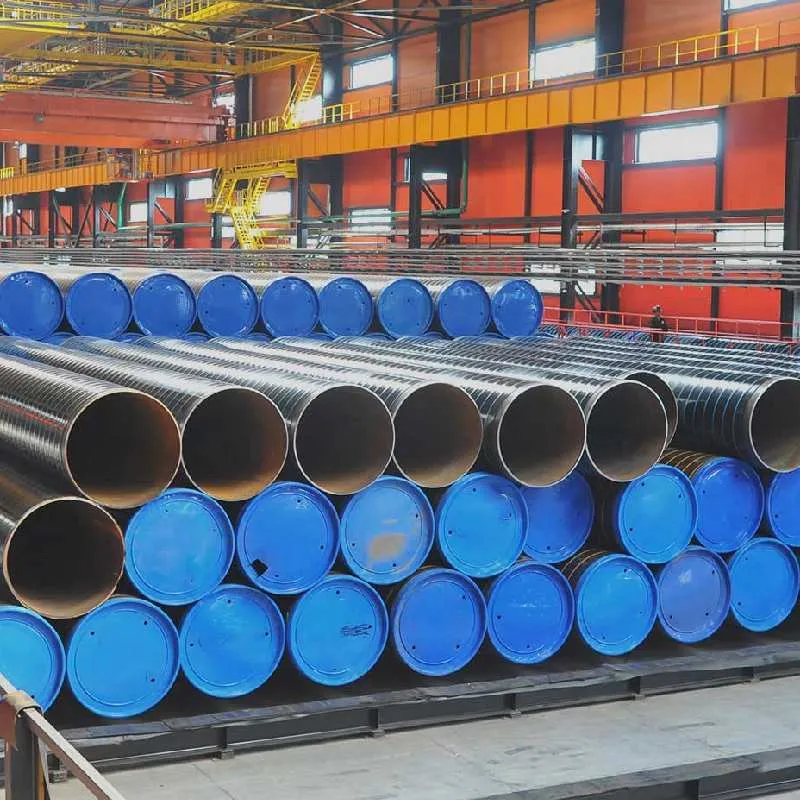-
Cangzhou Yulong Steel Co., Ltd.
-
Phone:
+86 13303177267 -
Email:
admin@ylsteelfittings.com

Oct . 18, 2024 15:56 Back to list
Exploring 2 Inch Seamless Pipe Specifications and Uses in Various Industries
Understanding 2-Inch Seamless Pipe Applications, Manufacturing, and Benefits
Seamless pipes are a staple in various industries, particularly in applications that require high durability and reliability. Among the different sizes available in the market, the 2-inch seamless pipe stands out due to its unique characteristics and versatility. This article delves into the definition, manufacturing process, applications, benefits, and considerations related to 2-inch seamless pipes.
Definition and Characteristics
A seamless pipe is a type of pipe that is manufactured without any seams or welds, making it stronger and more reliable than welded counterparts. The absence of seams ensures that the pipe can withstand higher pressures and reduces the risk of leakage, which is critical in many applications. The 2-inch diameter designation refers to the nominal size of the pipe, which is commonly used in various industrial, commercial, and domestic applications.
Manufacturing Process
The manufacturing process of seamless pipes typically involves the extrusion or rotary piercing method. In the extrusion method, a solid billet of metal (usually carbon steel, stainless steel, or alloy steel) is heated until malleable and then forced through a die to form a hollow tube. Conversely, the rotary piercing method involves feeding a heated billet into a piercer that rotates around its axis, creating a seam on the pipe. Once the initial pipe is formed, it undergoes further processes such as elongation, annealing, and finishing to achieve the desired dimensions and properties.
Quality control is a crucial aspect of the manufacturing process. Each 2-inch seamless pipe must comply with industry standards, such as ASTM and ASME, to ensure safety and performance across its intended applications.
Applications
The versatility of 2-inch seamless pipes makes them suitable for a wide range of applications
. Commonly, they are utilized in2 inch seamless pipe

1. Oil and Gas Industry These pipes are essential in transporting oil, natural gas, and other fluids under high pressure since they can withstand harsh conditions. 2. Water Supply Systems Due to their durability, 2-inch seamless pipes are used in municipal water supply networks, ensuring consistent flow without leaks. 3. Construction In structural applications, these pipes provide support and frameworks for buildings and bridges, offering strength and stability. 4. Manufacturing Many industrial processes require seamless pipes in machinery and equipment installations, where reliability is a necessity. 5. Heating Systems In heating, ventilation, and air-conditioning (HVAC) systems, 2-inch seamless pipes facilitate the transfer of fluids and gases effectively.
Benefits
The adoption of 2-inch seamless pipes comes with several advantages
- High Strength Seamless pipes are typically stronger than welded pipes due to the uniformity of material without joints, making them highly resistant to pressure and impact. - Resistance to Corrosion Many seamless pipes are manufactured using corrosion-resistant materials, which extends their lifespan and reduces maintenance costs. - Smooth Interior Surface The lack of seams provides a smooth inner surface, enhancing flow efficiency and minimizing turbulence. - Customization Manufacturers can produce seamless pipes in various grades and specifications to cater to specific industry needs.
Considerations
When selecting a 2-inch seamless pipe, several factors should be considered
1. Material Compatibility Different applications require different materials. For example, stainless steel is ideal for corrosive environments, while carbon steel is suitable for general applications. 2. Pressure Ratings It is vital to ensure that the pipe's pressure rating matches the application's requirements to prevent failure. 3. Standards Compliance Verify that the pipes meet relevant industry standards to ensure safety and reliability.
Conclusion
In conclusion, the 2-inch seamless pipe is an invaluable resource across various industries due to its strength, reliability, and versatility. With advancements in manufacturing processes and materials, these pipes continue to play a critical role in modern infrastructure and industrial applications. Understanding their characteristics, applications, and benefits can aid industries and engineers in making informed decisions that align with their operational needs.
Latest news
-
ANSI 150P SS304 SO FLANGE
NewsFeb.14,2025
-
ASTM A333GR6 STEEL PIPE
NewsJan.20,2025
-
ANSI B16.5 WELDING NECK FLANGE
NewsJan.15,2026
-
ANSI B16.5 SLIP-ON FLANGE
NewsApr.19,2024
-
DIN86044 PLATE FLANGE
NewsApr.19,2024
-
DIN2527 BLIND FLANGE
NewsApr.12,2024
-
JIS B2311 Butt-Welding Fittings LR/SR 45°/90° /180°Seamless/Weld
NewsApr.23,2024
-
DIN2605-2617 Butt-Welding Fittings LR/SR 45°/90°/180° Seamless/Weld
NewsApr.23,2024











